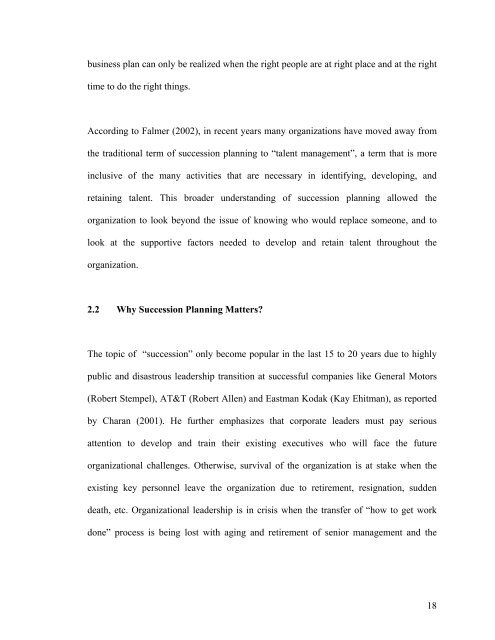CHAPTER 1: INTRODUCTION 1.0 Chapter Overview - DSpace@UM
CHAPTER 1: INTRODUCTION 1.0 Chapter Overview - DSpace@UM
CHAPTER 1: INTRODUCTION 1.0 Chapter Overview - DSpace@UM
Create successful ePaper yourself
Turn your PDF publications into a flip-book with our unique Google optimized e-Paper software.
usiness plan can only be realized when the right people are at right place and at the righttime to do the right things.According to Falmer (2002), in recent years many organizations have moved away fromthe traditional term of succession planning to “talent management”, a term that is moreinclusive of the many activities that are necessary in identifying, developing, andretaining talent. This broader understanding of succession planning allowed theorganization to look beyond the issue of knowing who would replace someone, and tolook at the supportive factors needed to develop and retain talent throughout theorganization.2.2 Why Succession Planning Matters?The topic of “succession” only become popular in the last 15 to 20 years due to highlypublic and disastrous leadership transition at successful companies like General Motors(Robert Stempel), AT&T (Robert Allen) and Eastman Kodak (Kay Ehitman), as reportedby Charan (2001). He further emphasizes that corporate leaders must pay seriousattention to develop and train their existing executives who will face the futureorganizational challenges. Otherwise, survival of the organization is at stake when theexisting key personnel leave the organization due to retirement, resignation, suddendeath, etc. Organizational leadership is in crisis when the transfer of “how to get workdone” process is being lost with aging and retirement of senior management and the18
















